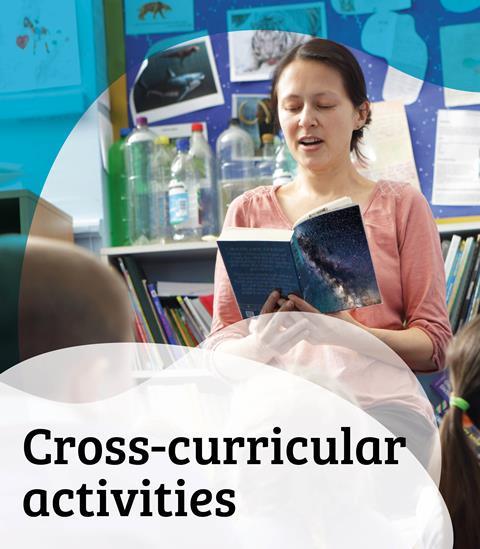A UV torch, some sunscreen and a scientific curiosity all come together in this practical to explore UV light and the best ways to block it out
Shed some light on ultraviolet (UV) rays, and how it interacts with skin. Learners will explore how sunscreen helps to protect them from the effects of UV.
Skill development
Learners will develop their working scientifically skills by:
- Drawing conclusions and raising further questions to be investigated, based on their data and observations.
- Asking their own questions about scientific phenomena.
Learning objectives
- Test a variety of sunscreens and sunglasses to determine their effectiveness at blocking UV light.
Concepts supported
- Radiation from the Sun can be harmful but there are ways to protect ourselves from UV light.
Apparatus
- A security pen
- A UV light or torch
- Sunscreen (SPF 15 or above)
Procedure
- Draw something on your hand using the invisible security pen.
- Shine the UV light on your hand. What happens?
- Now cover the picture with sunscreen. What do you see?
- What happens when you use body lotion instead?
What’s the chemistry?
The ink in the security pen reflects high frequency UV light, so it can only be seen when you shine the UV light on it.
When you cover the picture in sunscreen, the UV light can’t get through and it disappears.
This is because sunscreen contains chemicals that absorb the UV light and stop it getting to your skin.
Body lotion doesn’t contain any of these chemicals, so it won’t cover up the picture. It is important to wear sunscreen when you go out in the sun because the UV rays in sunlight can damage your DNA and cause sunburn and skin cancer.
Suggested activity use
This activity can be used in various ways such as in class, when children are learning about light or seasonal change, with a science club or as part of a science week. You could use this with a whole class as an investigation to stimulate discussion about what they have observed.
As an extension of the activity, learners could test a range of sunscreens and sunglasses to determine which offer the best protection. Children could also devise some simple tests, such as water resistance and ease of application, before rating the sunscreens.
Practical considerations
A variety of sunscreens and sunglasses will need to be given to the children, along with security pens and UV lights.
You will need to take into account health and safety considerations regarding children handling sunscreen, including allergies.
Downloads
Sunscreen and UV light: Handout
Handout | PDF, Size 1.81 mbSunscreen and UV light: demonstrators guide
PDF, Size 0.11 mb
Additional information
These resources were created for the Cambridge science festival 2013.












No comments yet